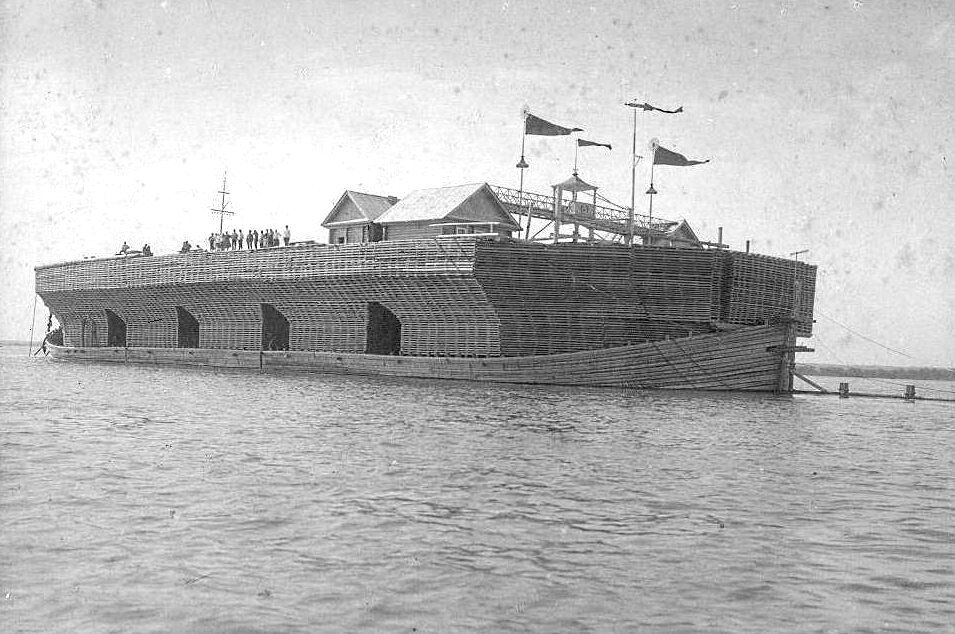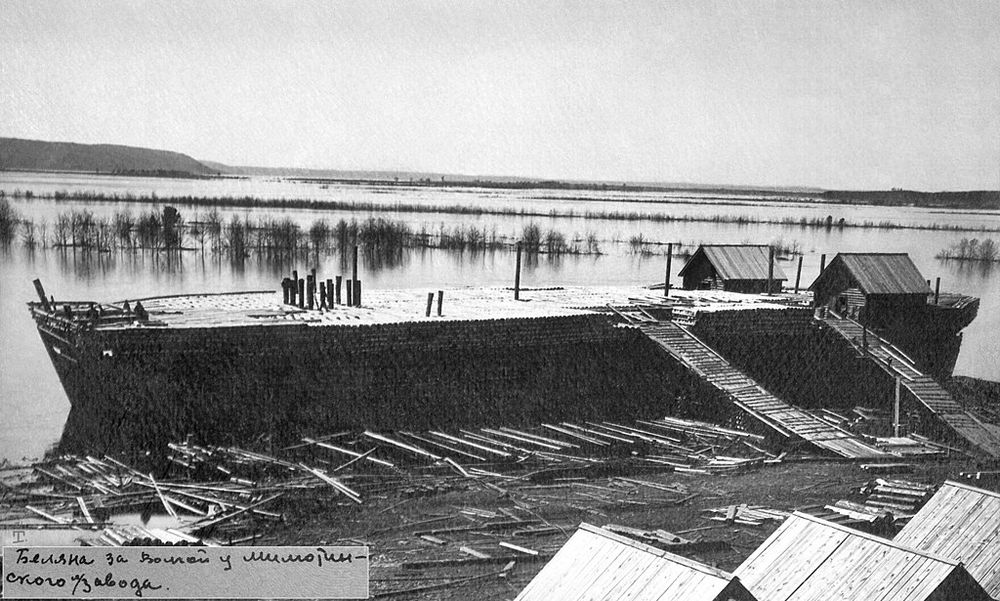The Belyana were some of the largest wooden ships ever built.
Yet, they were only meant for a single journey.
They were built to transport huge quantities of timber along the Volga and Kama.
At their destination, the vessel was disassembled and the wood sold.
Wood was logged in winter.
Loggers would spent the entire winter in the forest cutting down trees and preparing them for transportation.
After the spring flood, when rivers returned to normal flow, construction of belyanas started.
They took the entire summer, finishing in autumn.
First the hull was built using spruce beams and pine boards.
The flat bottom was made of spruce and the walls were made of pine.
About 240 pine and 200 spruce logs were needed to build a medium-sized belyana.
No tarring was performed, and the logs were simply tied tightly together.
The lack of tar gave the belyans a whitish appearance, from which comes its name.
Belyana means faded or white.
In addition, properly laid logs dry faster, which protects them from rot.
Two cabins were installed near the stern, and served as a balance and as quarters for the crew.
Small belyanas had a draught of 2.5 to 2.8 meters and could carry up to 1,600 tons.
Medium belyanas had a draught of approximately 3.5 m and could carry 3,200 tons.
They could carry 12,800 tons of wood, comparable to a modern container ship.
Each belyana was crewed by 15 to 35 sailors, while larger ones had up to 100.
The belyanas had no propellers and moved by the action of the river.
A huge rudder placed in the stern of the vessel allowed the pilot to navigate the belyana.
The boats' cabins were sold as ready-made houses.
Up to 500 steamships on the Volga needed large quantities of firewood to propel them.
After ships started to run oil, the demand for wood decreased.







